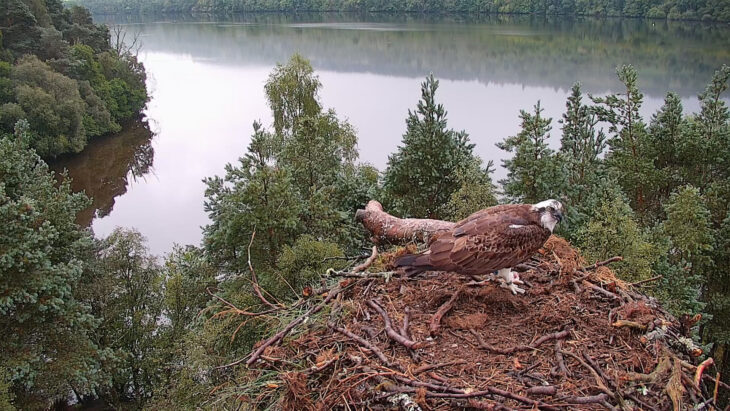NC0 has left on migration
Our resident female NC0 has left the reserve, bringing an end to her second successful breeding season at Loch of the Lowes.

The last sighting of NC0 on the webcam was on Sunday 22 August, just after 8am. LM12 brought a fish to the nest and within a few seconds she arrived to take it from him. She then flew off to enjoy this meal from a nearby perch.
This is a relatively late departure for a breeding female at Lowes (the latest date we saw the previous female LF15 was 13 August) and 2021 is only the second season on record that a youngster has left the reserve before its mother. Hopefully we’ll have plenty of seasons in the future to watch and observe NC0, and in time we’ll learn whether these later departures are the new normal.
As LR1 is already confirmed to have left on Sunday 15 August, that just leaves the two males. Breeding male LM12 was last sighted on the nest on Wednesday evening at 20:30, while LR2 was spotted just after 5pm on Thursday.
All of a sudden the reserve is starting to feel a little bit empty.
How do ospreys migrate?
Some migratory birds, such as geese, travel together in social groups. Ospreys only come together during the breeding season and they migrate alone. Some amazing adaptions allow this remarkable feat, but the journey is still fraught with danger. You can read more about osprey migration in this blog by our Species Protection Officer and Assistant Ranger Helen Lancaster.
Our Osprey Protection Programme at Loch of the Lowes is supported by players of People’s Postcode Lottery
Help protect Scotland’s wildlife
Our work to save Scotland’s wildlife is made possible thanks to the generosity of our members and supporters.
Join today from just £3 a month to help protect the species you love.
Preface
Our resident female NC0 has left the reserve, bringing an end to her second successful breeding season at Loch of the Lowes. The last sighting of NC0 on the webcam …
